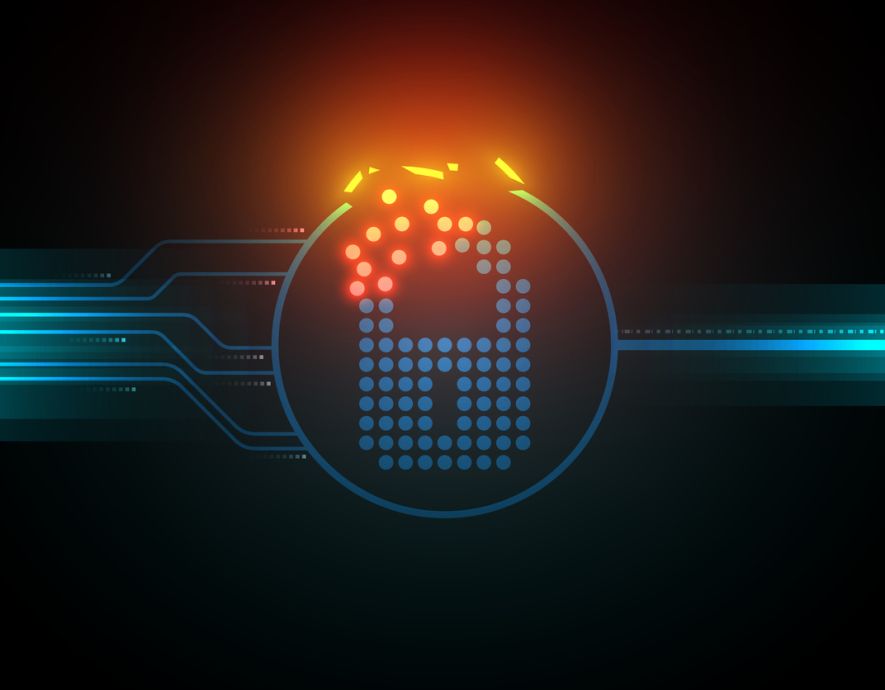
- Home
- Risks management
- Reducing security risks with artificial intelligence
Reducing security risks with artificial intelligence


User identities are increasingly the focus of cybercriminals. Phishing attacks have increased dramatically in recent years. Through these attacks, malware and ransomware enter the network, so that the compromise of a single user account puts all the company’s data at risk. Attackers are increasingly using AI technologies to create deepfakes. Organizations need to be prepared and rely on security solutions that use AI.
In blended threats/attacks, AI-powered computer bots prepare attacks and pass the data they gather to hackers. The hackers use this information to gain a knowledge advantage. Only by deploying AI technologies in the enterprise that can keep up with the attacks can such attacks be prevented.
AI-manipulated videos and phone calls, known as deep fakes, along with targeted phishing attacks, greatly increase the risk potential for organizations. But when security professionals and AI work together effectively, they can reliably thwart attacks and prepare for cyber threats.
AI protects people from attackers
AI can protect user identities and respond to attacks in real time. It can also automate the response to attacks. As a result, defenses are more reliable, secure, and much faster than using traditional technology.
Artificial intelligence helps decision makers make the right decisions at the right time and automates processes related to security, identity, and access. It is not a replacement for human employees, but rather a complement to them and an enhancement through interaction. Ultimately, AI can only learn what humans enable through the appropriate AI model. AI can only be used effectively by humans, while humans benefit from the capabilities of AI. This creates a win-win situation that benefits everyone.
It’s time to upgrade your enterprise security infrastructure
According to the Verizon Data Breach Incident Report, credentials are the most sought-after data category in security breaches, accounting for more than 60%. According to the Identity Defined Security Alliance, 79% of organizations have experienced an identity-related breach in the last two years. In addition, remote access credentials are now a sought-after commodity on relevant Internet forums.
Cybercriminals are eager to get their hands on user credentials because they can use them to infiltrate corporate networks. Firewalls and malware protection are usually of no help here, as users can log on directly to the network and undermine all other security technologies. When AI is also used on the attacker’s side, traditional protection technologies have virtually no chance.
Beware of attacks against privileged user accounts
In addition, attackers are becoming more sophisticated and are not only attacking traditional user accounts but are also focusing on privileged user accounts. This allows cybercriminals to gain direct access to the network while also gaining administrative access. Therefore, it is especially important to protect privileged user accounts from AI attacks. It is also important to document which user accounts have privileged rights. This is often not clear.
AI attacks also require a lot of effort on the part of the attacker. Therefore, hackers often focus on privileged user accounts to make the effort worthwhile. Today, deepfakes can impersonate people on the phone or even in video conferences on platforms like Teams or Zoom. This makes it possible to hijack entire meetings and steal identities. Protection against such AI-based attacks can only be effectively provided by AI-powered defenses, as human employees have little chance without the proper equipment.
AI is the answer to hacker AI attacks
Machine learning and other AI technologies can significantly enhance enterprise security systems. Such systems can analyze local traffic as well as traffic to the Internet and cloud in real time and make automated decisions. Traditional virus scanners or firewalls cannot do this. Intelligent systems also help proactively identify and remediate security vulnerabilities.
When AI is used in conjunction with intelligent identity and access management (IAM), user account permissions can be intelligently controlled. In such systems, rather than rigidly defining permissions and privileges, AI can identify and flexibly control the permissions that are needed. For example, if a particular account does not use its assigned privileges for an extended period, the AI will recognize this and revoke the privileges for that area. If the user needs them again later, he or she can request them through a self-service portal, and they will be reassigned.
AI systems can not only analyze and notify responsible parties of attacks, but also actively intervene in the environment to protect the organization’s network, users, and data. AI acts proactively, closing gaps before attacks can exploit them. AI takes care of the tasks that require a quick response and are repetitive. Business owners get exactly the information they need, and AI takes care of the rest.
Access and authorization with AI
Traditional biometric systems are no longer able to adequately protect access credentials or authorizations. Cybercriminals can now easily exploit such systems with AI technologies. If AI systems are still used for protection, they can be coupled with biometric systems. This allows access systems to detect unusual user behavior, such as logging in at unusual times or from locations where users do not normally log in. The system can then either require additional multi-factor authentication or block access to certain areas. Working with AI, endpoints can also be quarantined. Unquarantining is also done by AI when its risk assessment changes. AI does this by using patterns to identify security threats.
AI saves investment
AI not only makes networks more secure, but it also saves money. Processes can be intelligently automated. It also reduces friction and eliminates errors in processes. Employees need to worry less about repetitive tasks and can focus on other things. AI detects anomalies much faster and more reliably than humans. Together with humans, AI forms a team that maximizes network security and significantly improves employee satisfaction.
the newsletter
the newsletter



